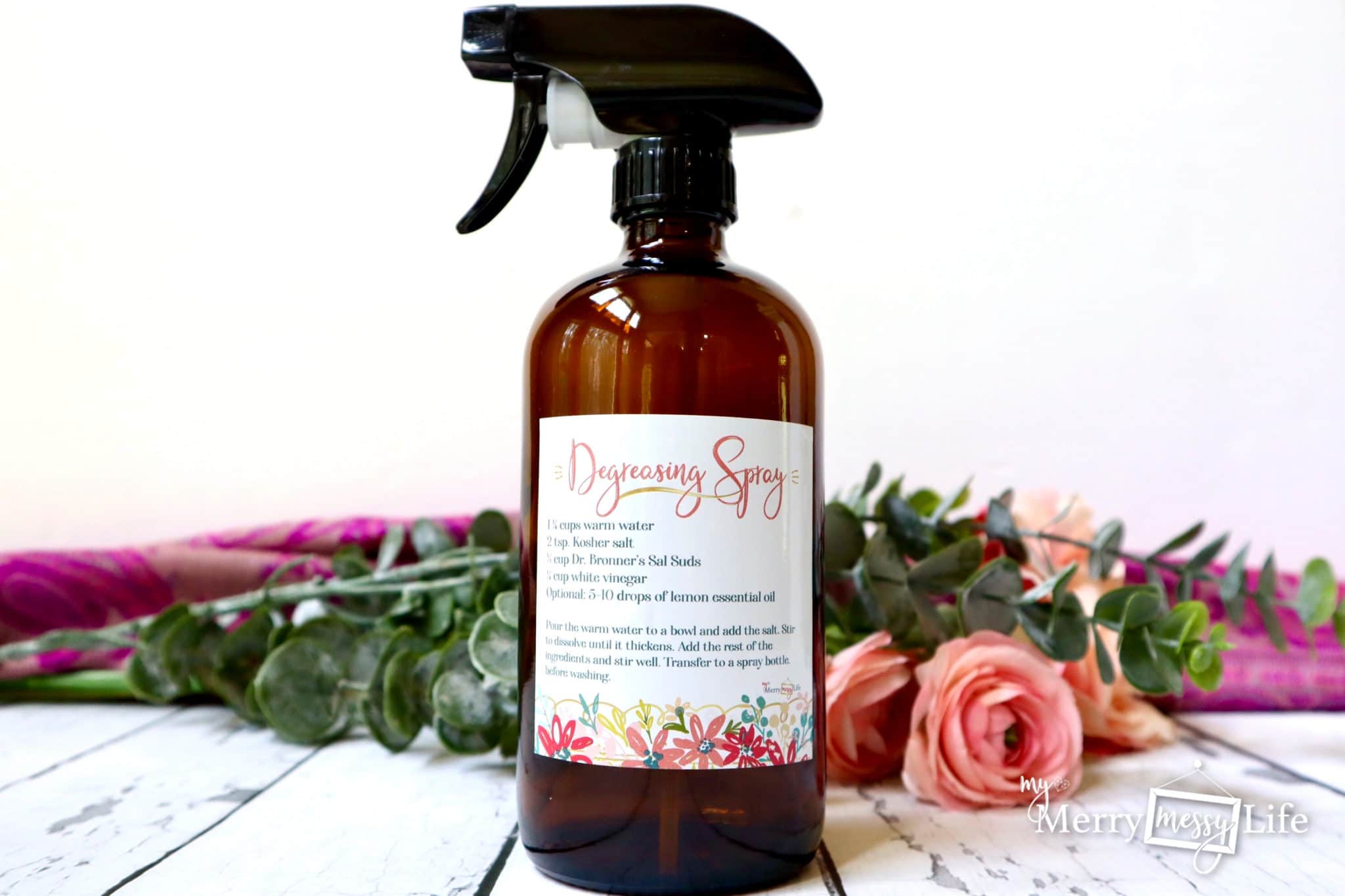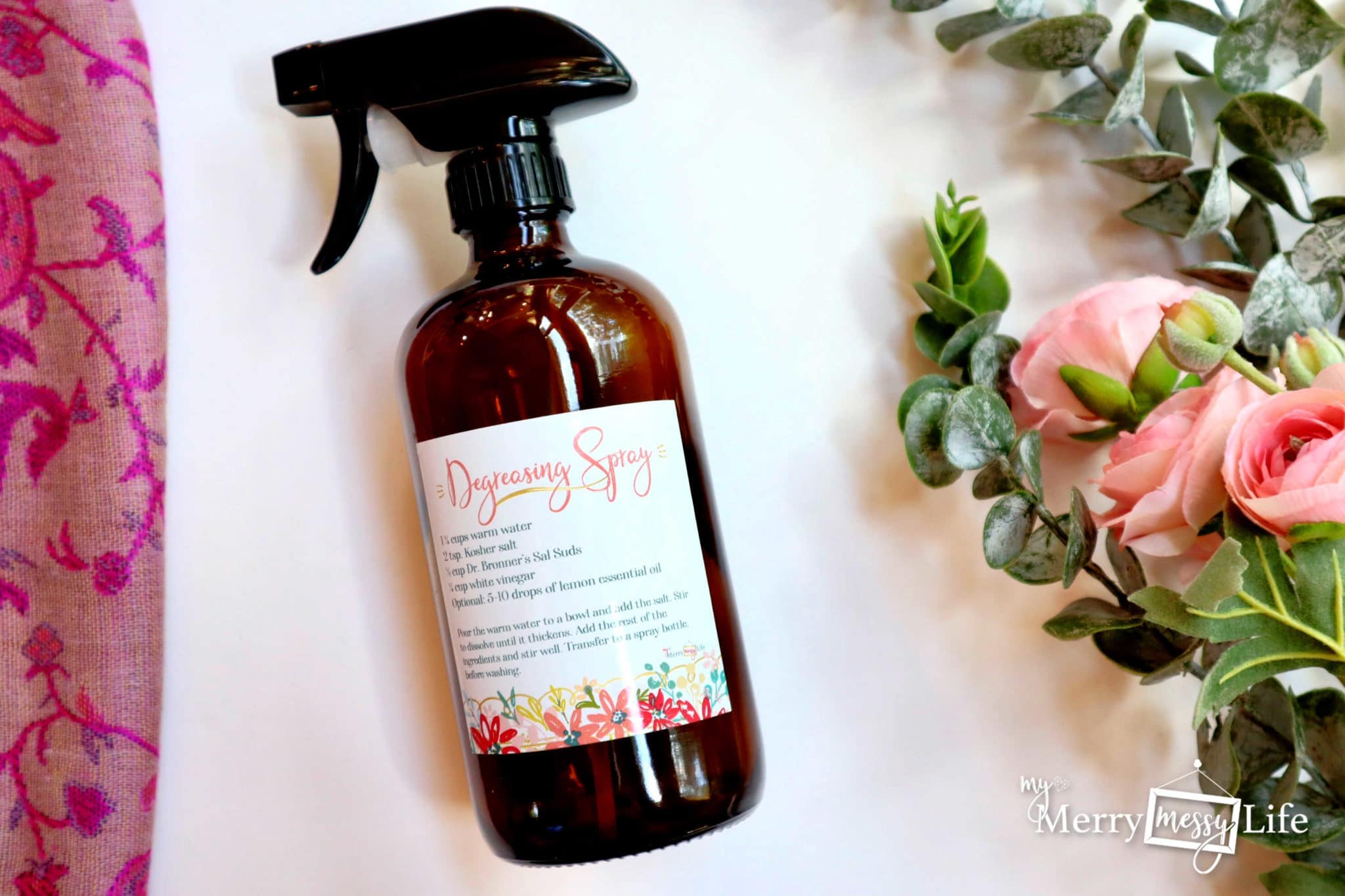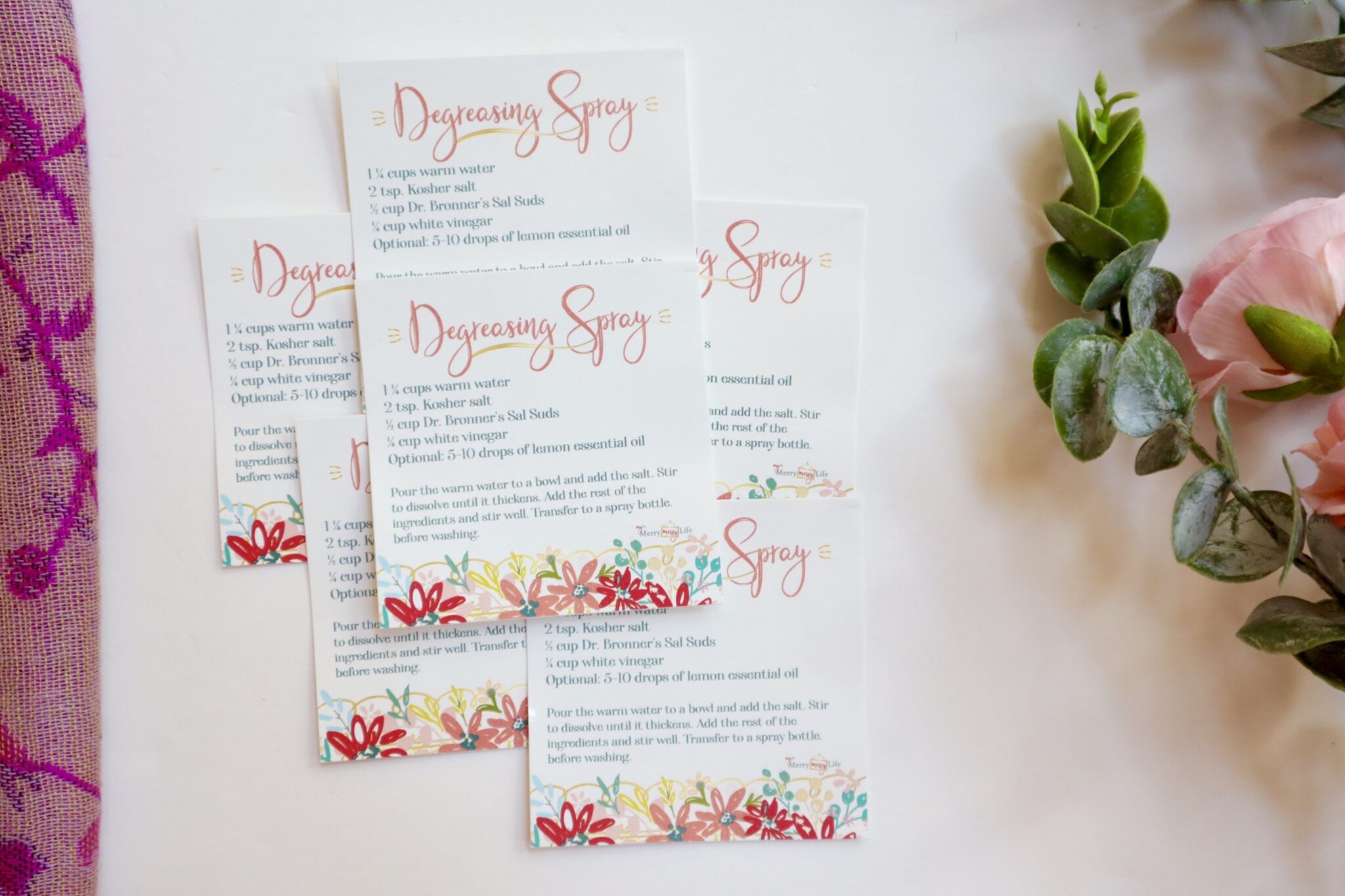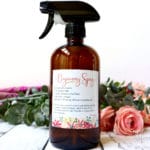Make this Easy Natural Degreasing Spray Recipe at Home
A safe, effective, and natural degreasing spray recipe you'll love. It cleans those tough jobs in our homes, like ovens, stovetops, grills, and more!

Top 10 Cleaning and Laundry Recipes
This DIY Natural Degreasing Spray recipe is part of a 10-part series of natural cleaning and laundry recipes. You can find a list of all of the recipes here. This natural fabric stain remover recipe is also found in my book, Detox Your Home, which you can find on Amazon. It includes more than 80+ recipes, research and lists for natural products you can purchase all to help you go natural in your home!
Toxins in Degreasing Cleaners
Degreasers contain highly toxic and poisonous solvents to break down oils and grease. The most commonly used solvent is Trichloroethylene (TCE).
TCE is a solvent used as an industrial and general household degreaser. It is found as an ingredient in products such as paint thinners and removers, adhesives, dry cleaning agents, stain removers, and carpet cleaners. Health risks from TCE exposures are highest when using airborne products such as aerosol degreasers, spray fixatives, or spray cleaners. (source).
TCE is especially harmful to children, with links to birth defects, damage to the brain and the nervous, reproductive, and immune systems, and increased risk of cancer. (source) Yikes!
Volatile Organic Compounds – VOC's
Solvents release Volatile Organic Compounds into the air which are toxic to humans, animals and the environment. When inhaled, they harm the respiratory system, and contribute to neurological damage, reproductive and developmental harm and even cancer (source). So it's very important when using anything that contains solvents in your home to ventilate the area very well, wear gloves, and a mask. If you can do it outside, even better! They also contribute to air and water pollution.
My Dad, Motor Oil and Degreasing Soap
Now obviously, there are times when you just really need a degreasing soap or spray. I remember as a kid how my dad would be out working on our cars as a kid for hours at a time (bless him!) and he'd come into his workshop and wash his hands with a stinky degreasing soap. Back then, no one was talking about toxins in our products.
Today, if I regularly worked on our cars (which, of course, I haven't the slightest clue about!), I'd use latex gloves while dealing with motor oil and greasy car parts so that the hand cleanup wouldn't need to be as harsh. And I'd try this recipe to see if it works well (I haven't used it for motor oil yet, so if you do try it, let me know what your experience is!).
And honestly, if this recipe didn't work and my hands still had black grease on them, I'd use the toxic stuff and go take a detox bath afterwards and drink a lot of water!

A Note About Dr. Bronner’s Sal Suds
In the natural world, we have vilified Sodium Laureth Sulfate. We say it’s a carcinogen and highly toxic to aquatic life. In most cases, this is true. But did you know that not all SLS is created equal? It depends on how it’s processed.
Check out Dr. Bronner’s Sal Suds rating on the EWG.org – it gets a perfect score! Totally nontoxic and safe.
According to this article,
Sodium Lauryl Sulfate (SLS) is a surfactant that cuts grease and dirt, generates copious suds, and biodegrades quickly and completely. SLS is made by combining a sulfate group with lauryl alcohol from coconut oil and then attaching sodium. If improperly formulated, SLS can irritate skin, but our superb formula uses coco-betaine and lauryl glucoside to counter this.
Also, note that SLS is not a body care product. I would not use it in my homemade body washes or hand soaps unless you’re actually washing car grease or motor oil off of your hands! And definitely don’t use it in your hair – most shampoos in the stores contain SLS, and they really dry out and then damage the hair.
It is meant to clean objects – like clothes, the kitchen, bathrooms, cars, etc.
Lemon Essential Oil
Lemon oil is your natural cleaning best friend! It is known for how well it releases and loosens stuck on particles. Not to mention its lovely, fresh scent. I use it all over the house – when the kids put stickers on the walls, I'll use a drop of it on a sticker and wipe it off with a paper towel or washcloth. I'll add it to my sponge when wiping down door jams that have sticky fingerprints all over them.
I prefer to get all of my oils from Young Living Essential Oils as they have very high quality standard and I feel confident that their oils are pure. We also use lemon in our house to diffuse for a fresh, bright aroma, and put in food and our water (for me and my husband, not the kids). Young Living has starter kits that make it really easy to get started with essential oils. Learn more about all of that here!
PrintDIY Natural Degreasing Spray Recipe
A DIY natural degreasing spray recipe that's tough on grease and perfect for very dirty areas like ovens, toaster ovens, car parts, cars, and more.
Ingredients
- 1 1/4 cups warm to hot water
- 2 tsp. Kosher Salt
- 1/2 cup Dr. Bronner's Sal Suds
- 1/4 cup Distilled White Vinegar
- 15 drops of Lemon Essential Oil and/or 1 tbsp. of lemon juice
- 16 oz. brown amber glass spray bottle
- Waterproof, vinyl recipe label for your bottle or get a set of 10 printable natural cleaning & laundry recipe labels
Instructions
Pour the water into a bowl and add the salt. Stir until the salt dissolves. Add the soap and stir until it thickens. Add the vinegar and lemon essential oil or lemon juice and stir well. Transfer to a 16 oz. spray bottle.
Notes
The salt helps the solution to be thicker – it creates a gel. If you'd like the spray to thinner, omit the salt.
Would You Rather Buy than Make?
If you'd rather buy your own natural degreasing spray than make it, here are ones I can recommend that are safer than most other store-bought degreasers:
Get Waterproof, Vinyl Labels from my Etsy shop
You can get a recipe label that's waterproof and professionally printed in my my Etsy shop. When you go to refill the bottle or jar, you don’t have to look up the recipe again. It’s printed on the label itself! These are waterproof, vinyl stickers that are high quality and do not pucker or come off even if they get wet.
- Get just the natural degreasing spray label here
- Get a set of 10 cleaning and laundry sticker labels here

[optin-monster slug=”xs2yggdkacqf5ww9fqqm”]

